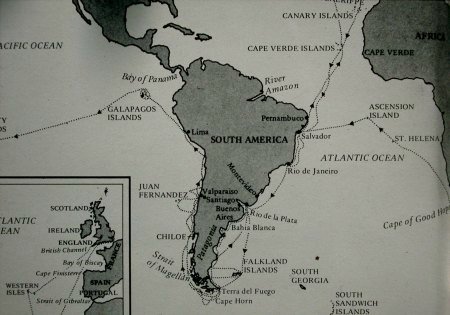
From: Charles Darwin, Sproule 1990

The ship sailed out to South America on December 27th. Nearly all the voyage Darwin was seesick, except when it was calm. But he didn't complain about it in his letters or in his (24) notebooks. However, when possible he made expeditions over land. While the Beagle was doing its job, he travelled by horse to the next harbour of the Beagle. Many of his discoveries were made on land. He worked extremely hard during the five years the voyage was taking. He sometimes travelled for weeks through the Argentine pampas, sleeping under the stars and living from what he was shooting. He had always been energetic and sporty, but now he became hardened and indefatigable. Every now and then large sendings of stuffed animals, plants, seeds, pieces of rock and fossils were sent to Europe when the Beagle arrived in a harbour.
From 1832 to 1834 the eastern coast of South America was explored, Tierra del Fuego (Land of Fire) and the Falklands inclusive. Especially the most southern point, Cape Horn, must have been a torment to the seesick Darwin.
Darwin didn't base himself on a specific theory in his explorations. He collected consciously as much material as possible and was hoping that the conclusions would come out automatically. During the voyage he still believed in unchanging species, but his suspicion was aroused.